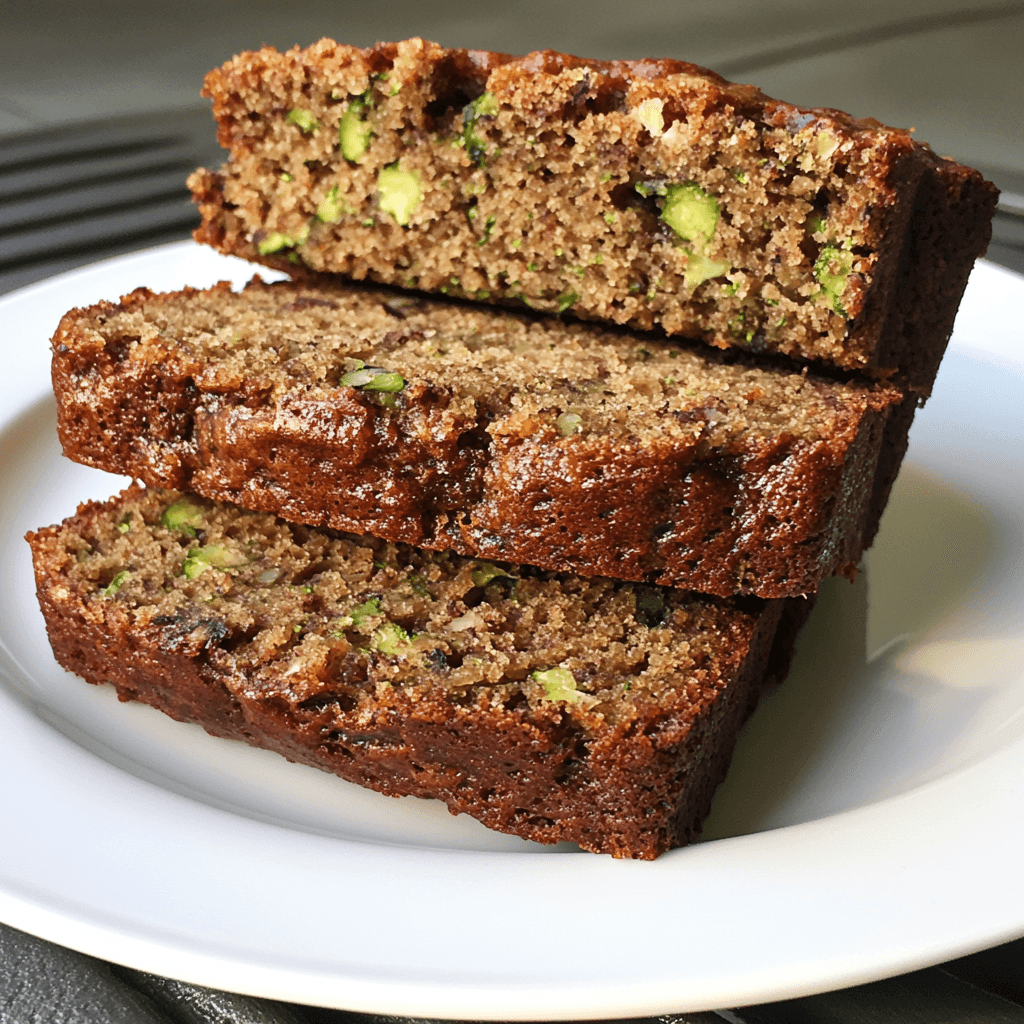“I’ve been baking zucchini bread for years, and it’s always a hit with my family and friends. The key is to use fresh zucchini and not overmix the batter.” – Chef Emily, Owner of The Breadwinner Bakery
Introduction
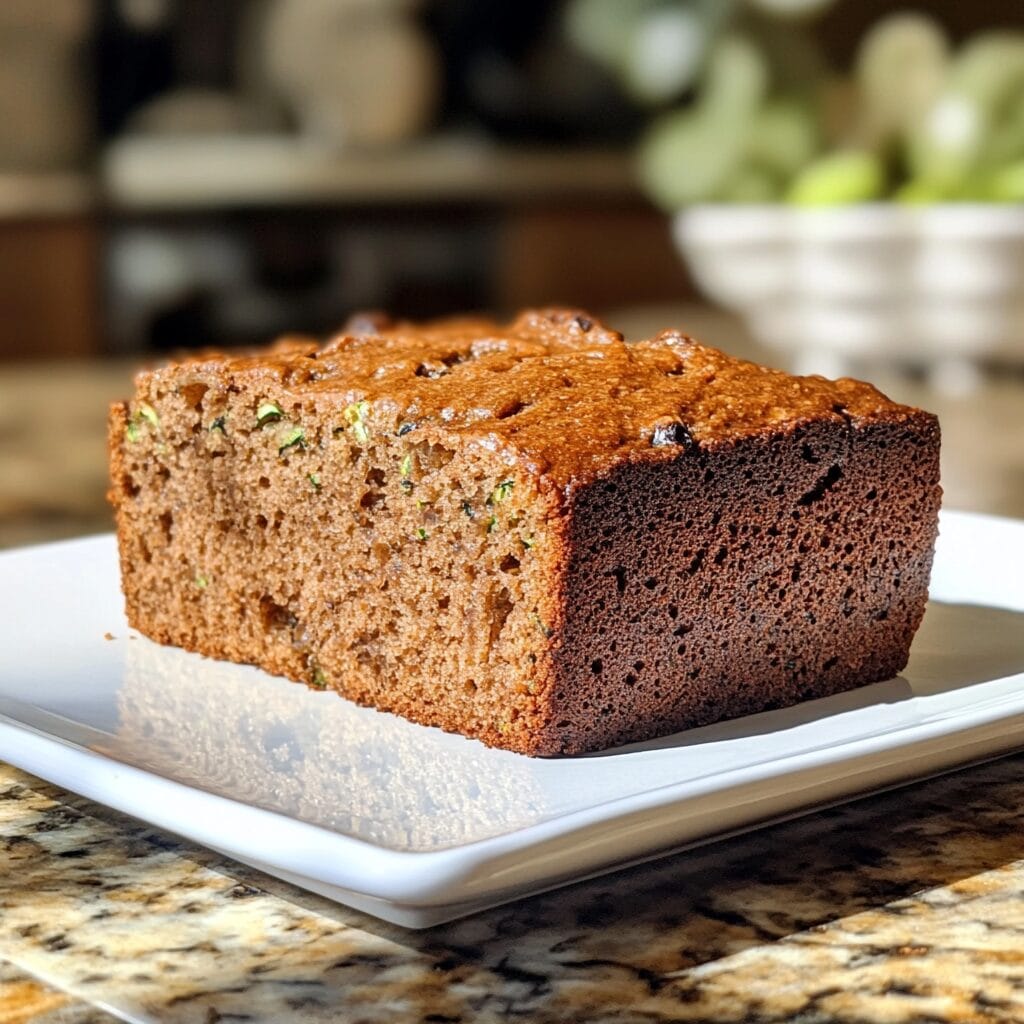
What is Zucchini Bread?
Benefits of Zucchini Bread
-
It’s a great way to use up zucchini from your garden or garden store.
-
this bread is a healthy alternative to traditional sweet breads, thanks to the nutritional benefits of zucchini.
-
It’s perfect for breakfast, snacks, or as a dessert.
| Nutrition Facts | Value |
|---|---|
| Calories | 220 |
| Total Fat | 9g |
| Saturated Fat | 1.5g |
| Cholesterol | 20mg |
| Sodium | 200mg |
| Total Carbohydrates | 35g |
| Dietary Fiber | 2g |
| Sugars | 15g |
| Protein | 3g |
| Ingredients | Quantity |
|---|---|
| All-purpose flour | 2 cups |
| Granulated sugar | 1 cup |
| Brown sugar | 1/2 cup |
| Large eggs | 2 |
| Grated zucchini | 1 cup |
| Vegetable oil | 1/2 cup |
| Vanilla extract | 1 teaspoon |
| Baking powder | 1 teaspoon |
| Salt | 1/2 teaspoon |
| Chopped walnuts (optional) | 1/2 cup |
Preparing Zucchini for Bread
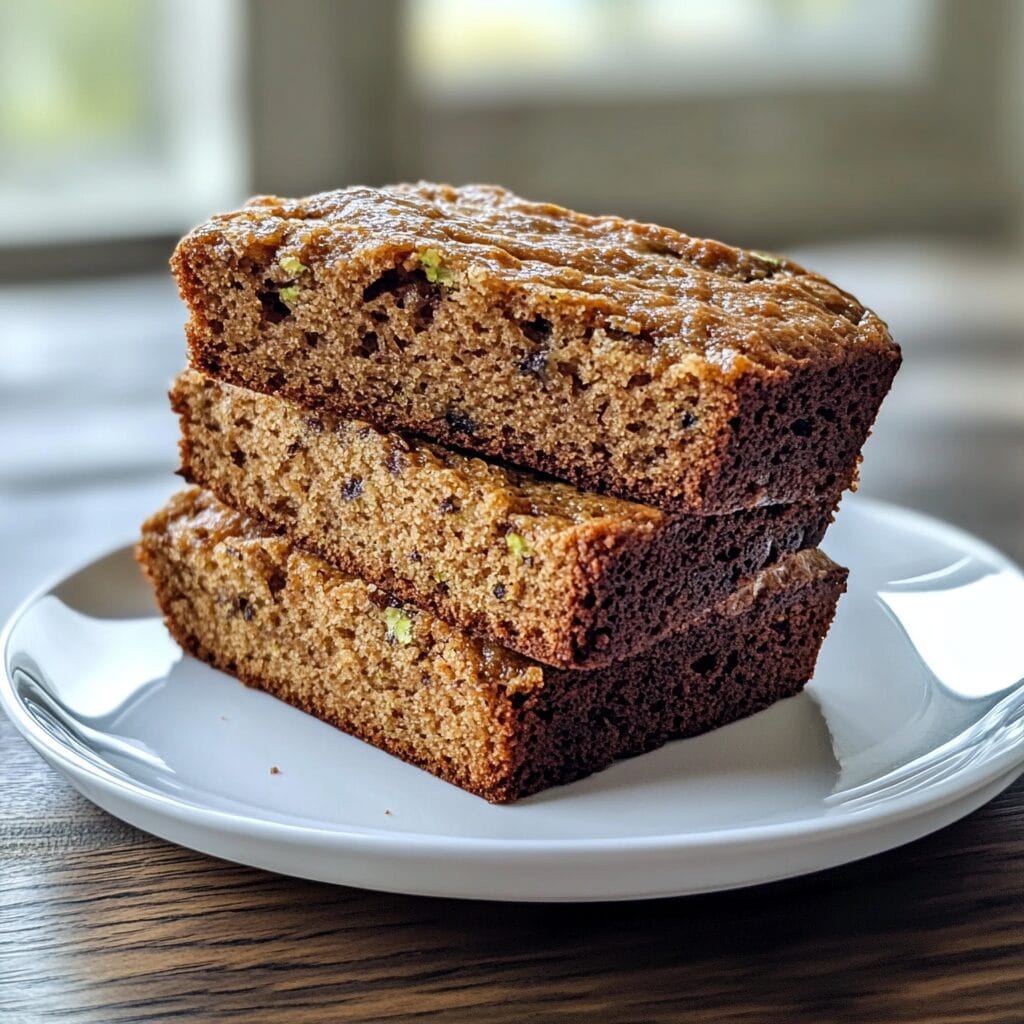
How to Grate Zucchini for Bread
“The key to making great Bread is to use the right amount of grated zucchini. Too little, and the bread won’t be moist enough. Too much, and it’ll be too wet.” – Baking Expert, Sarah Jones
Tips for Preparing Zucchini
Zucchini Bread Recipe
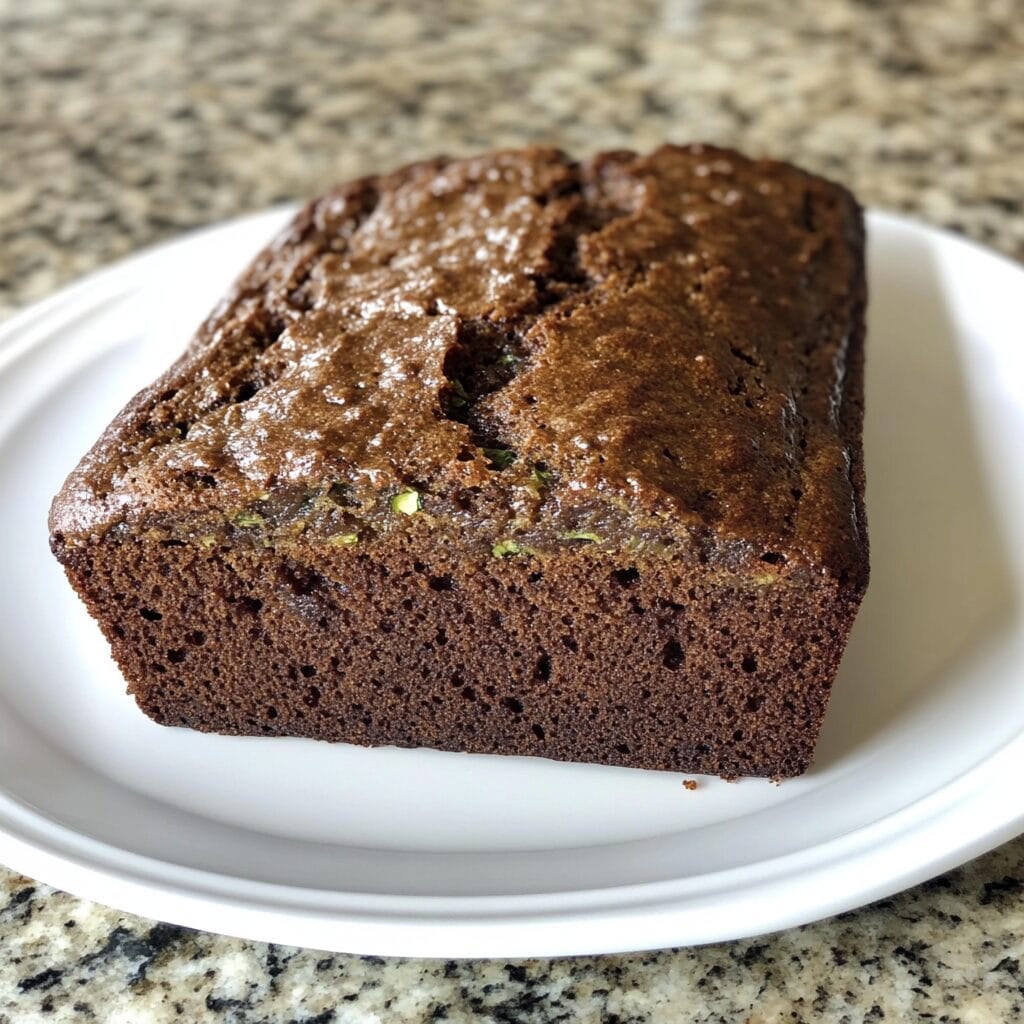
Classic Bread Recipe
Variations of Zucchini Bread
-
Chocolate Chip Flavor: Add 1/2 cup of dark chocolate chips to the batter for a sweet twist.
-
Nutty Flavor: Add 1/2 cup of chopped pecans or walnuts for added crunch.
-
Spiced Flavor: Add 1/2 teaspoon of ground cinnamon or nutmeg for an extra boost of flavor.
Zucchini Bread Tips and Tricks
-
Use fresh zucchini for the best flavor and texture.
-
Don’t overmix the batter, as this can lead to a dense Bread.
-
Experiment with different ingredients to create your own unique Bread recipe.
Baking the Perfect Zucchini Bread
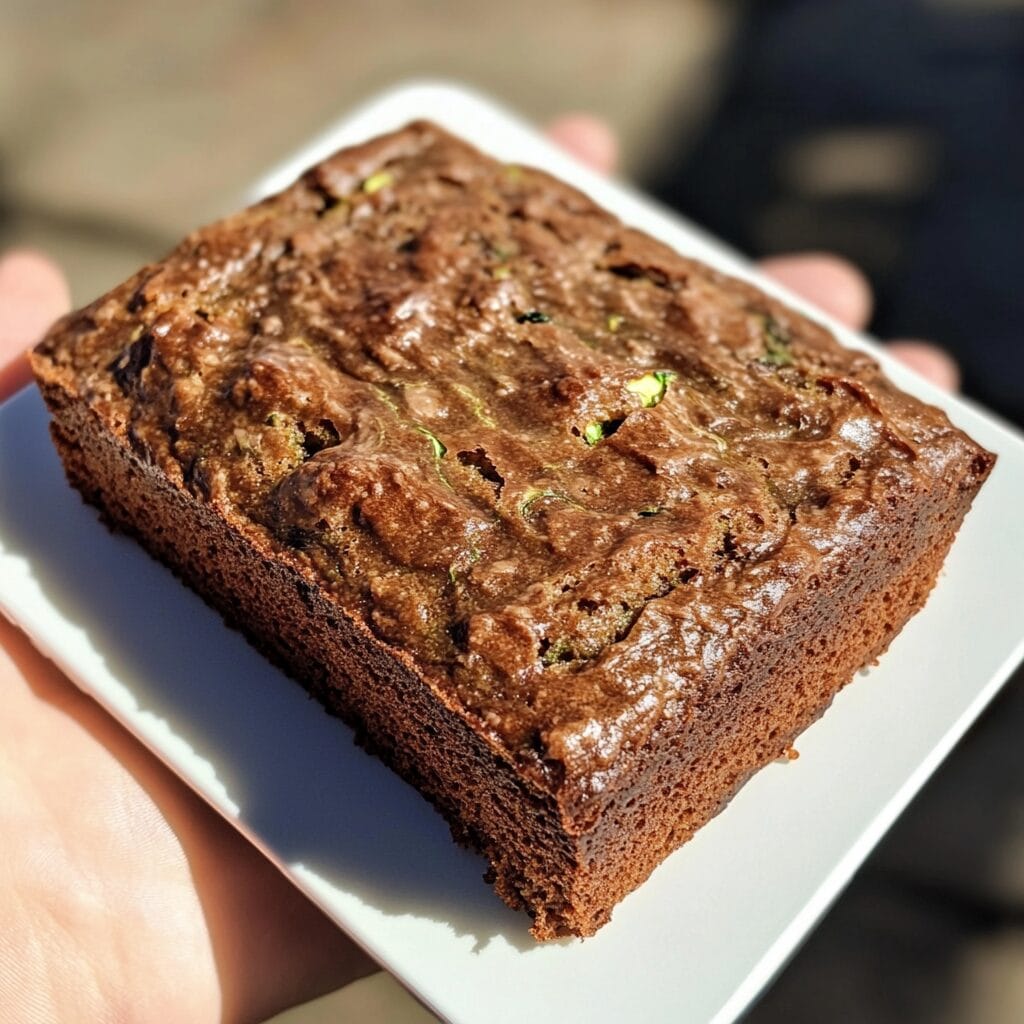
Tips for Baking Moist Zucchini Bread
“The key to baking perfect Zucchini Bread is to not overdo it. Keep an eye on the bread, and don’t be afraid to take it out of the oven a little early.” – Experienced Baker, Rachel Lee
How to Know When Zucchini Bread is Done
-
Use a toothpick: Insert a toothpick into the center of the bread, and if it comes out clean, the bread is done.
-
Check the edges: The edges of the bread should be golden brown and slightly firm to the touch.
-
Check the internal temperature: The internal temperature of the bread should be around 190°F to 200°F.
Storing and Preserving
How to Store Zucchini Bread
-
Room temperature: Store the bread at room temperature in an airtight container for up to 3 days.
-
Refrigerator: Store the bread in the refrigerator for up to 5 days.
-
Freezer: Wrap the bread tightly in plastic wrap or aluminum foil and store it in the freezer for up to 2 months.
Canning Zucchini Bread
Zucchini Bread Storage Tips
-
Cool the bread completely before storing it to prevent moisture buildup.
-
Use airtight containers or wrap the bread tightly in plastic wrap or aluminum foil.
-
Label and date the stored bread so you can easily keep track of how long it’s been stored.
roubleshooting Common Issues
Why Zucchini Bread Turns Out Dry
“I’ve found that using too much flour can make Zucchini Bread dry and dense. Make sure to measure your flour accurately and don’t overmix the batter.” – Experienced Baker, Emily Chen
Other Common Issues with Zucchini Bread
-
Soggy bottom: This can be caused by not baking the bread long enough or by using too much zucchini.
-
Uneven texture: This can be caused by not mixing the batter properly or by using old ingredients.
-
Lack of flavor: This can be caused by not using enough spices or flavorings.
FAQs
Can You Boil Ground Beef for Spaghetti?
While you can cook ground beef in liquid, boiling it like pasta isn't the best approach. Instead, brown the ground beef in a pan to create a rich, savory flavor that pairs perfectly with bowtie pasta. This method allows you to cook the ground beef evenly and prevents it from becoming tough or mushy.
What to Add to Ground Beef for Pasta?
To make your Bowtie Pasta with Ground Beef recipe even more delicious, try adding some aromatics like onion, garlic, or shallots to the ground beef as it cooks. You can also add some dried or fresh herbs like basil, oregano, or thyme to give the dish a boost of flavor.
Should You Drain Ground Beef for Pasta?
After browning the ground beef, it's a good idea to drain off any excess fat to prevent the dish from becoming too greasy. However, be sure to leave some of the juices and fat behind to keep the ground beef moist and flavorful.
How to Know When Bow Tie Pasta is Done?
The best way to check if your bowtie pasta is done is to use the bite test. Simply bite into a piece of pasta, and if it's still too crunchy or hard, it's not done yet. If it's mushy or soft, it's overcooked. Ideally, you want the pasta to be al dente, which means it should still have a bit of bite or chew.
How Do You Keep Bow Tie Pasta from Sticking Together?
To prevent your bowtie pasta from sticking together, try adding a tablespoon or two of olive oil to the cooking water. You can also stir the pasta frequently as it cooks to prevent it from sticking. After draining the pasta, toss it with a bit of olive oil or sauce to keep it moist and prevent sticking.
Conclusion and Final Tips
Conclusion
Final Tips for Baking our Bread
-
Experiment with different ingredients and spices to create your own unique Zucchini Recipe Bread.
-
Don’t be afraid to try new things and make mistakes – it’s all part of the baking process!
-
Share your Zucchini Recipe Bread with friends and family, or enjoy it all by yourself (we won’t judge!).

